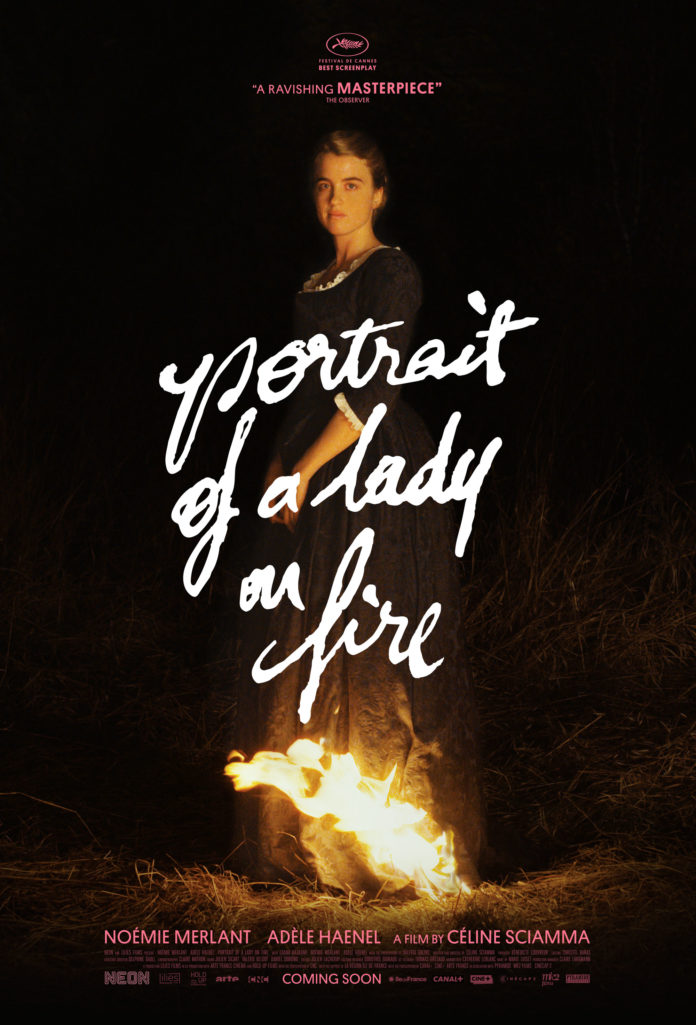When you look at a works of art by Picasso, Michelangelo or Da Vinci, words that may come into your mind include “timeless” and “masterpiece”. Early on watching “Portrait of a Lady on Fire,” you quickly realize that the same applies for writer and director Céline Sciamma’s film about two star crossed lovers in 18th century France.
Marianne (Noémie Merlant in a career defining role) is commissioned to paint Héloïse (Adèle Haenel, who is familiar to indie film fans from 2017’s “BPM”) by her mother without her knowledge. The portrait is to be made for a man in Milan, Italy that she has never met so that he can judge her appearance and decide if she is worthy of his hand in marriage. Marianne spends time during the day with her subject to be able to remember her face when she paints in a makeshift, hidden studio in her bedroom.
Soon, the film begins to change its tone into an all-out romance. One of scene’s most intimate moments comes when the two describe each other’s quirks. When Marianne doesn’t know what to say, she touches her forehead and Héloïse bit her bottom lip when she is embarrassed.
It’s moments like this that allow the audience to understand every characters’ thoughts, even if they’re not directly stated. Even more so, it shows how perfectly this romance blossoms over the course of eleven days at Héloïse’s family home on the coast of France.
Their first kiss is shared in a cave with the waves smashing the shore in the background. While this happens well into the second half of the film, both characters savor every moment, knowing that their time together will soon be over as Héloïse’s mother returns to take her to Milan to start a new life.
The audience knows that time is the main antagonist in the story and yet the two do not seem to care. These remaining days spent with Marianne are Héloïse’s last days of freedom. Luckily, their romance sparks as fast as the flames catch on Héloïse’s dress in the film’s title scene.
For a film with no musical score, music plays an essential role, especially in the already mentioned “lady on fire” scene and the heartbreaking final minutes. Other than these two instances, the film is composed of French dialogue that is lyrical in and of itself and a sound design that articulates every step down the stairs, wave crashing against the shore and brush stroke against the canvas.
The rhythm of every line spoken blends beautifully together to allow for non-French speaking viewers to comprehend exactly which word is being enunciated in a particular sentence. This is in large part due to the perfect acting by all both actresses who give their characters plenty of depth with little to no backstory for both.
Regarding the script, it’s packed with small moments that all meet rewarding ends. Sciamma is in complete control of the story and all its elements. We may not know in what direction the script will lead once the romance begins, but we do know that no matter the resolution it will be satisfying from a storytelling perspective.
When all the pieces of a film come together so masterfully, (the direction, writing, acting, cinematography, etc.) you instantly know you are watching what will soon be regarded as a classic. This phrase should not be used lightly, but in the context of this film, it feels like destiny.









